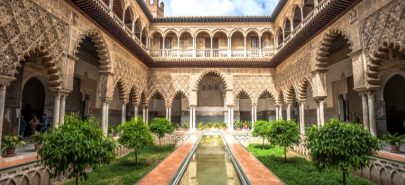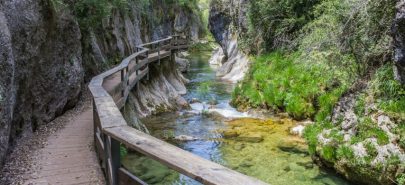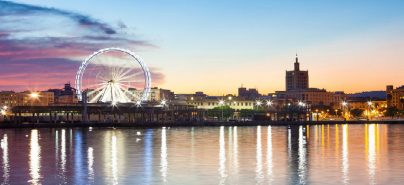Find out what to see in Baeza, the little sister of Ubeda, right now!
Baeza is a jewel of the Renaissance times, just like its sister Ubeda. It was one of the first towns to be conquered by the Christians during the Reconquista in 1227, which made almost disappear the traces of the previous Moorish rulers.
The most mesmerising features of Baeza are undoubtedly the palaces and churches that populate this small, but breathtaking, town, just 9 km far from Ubeda.
You can discover all of them by visiting the town, but before don’t forget to take a look at what to see in Baeza.
Cathedral of Baeza
During the Reconquista, the Christians used to destroy the Mosques and build a church in their place. Something similar also happened to the Cathedral of Baeza, which was also one of the first to be consecrated. The Cathedral has a 16th-century facade, which you can spot from the square Plaza de Santa María, a focus for the religious and civic life of Baeza.
The most ancient pieces of architecture are the 11th-century tower’s base, which was built on top of the mosque’s old minaret, and the 13th-century Moon Doorway. The Puerta de la Luna is a Gothic-Mudéjar door located at the western end of the Cathedral, on whose top a 14th-century rose window will fascinate you.
The Cathedral presents various styles in its interior, from the Gothic easternmost bays of the nave to Corinthian capitals and Renaissance-style bays, whose architect is Andrés de Vandelvira, who also helped with the construction of the Cathedral in Ubeda.
- €4/adult
- €2.50/person for groups of up to 20 people
- €2/person for retired people
- €1.50 per child and special visits
- Monday to Friday: 10.30 am – 2 pm and 4 pm – 6 pm
- Saturday: 10.30 am – 6 pm
- Sunday: 10.30 am – 5 pm
- Mass: Monday to Friday, and Sunday: at 10 am
Palacio de Jabalquinto
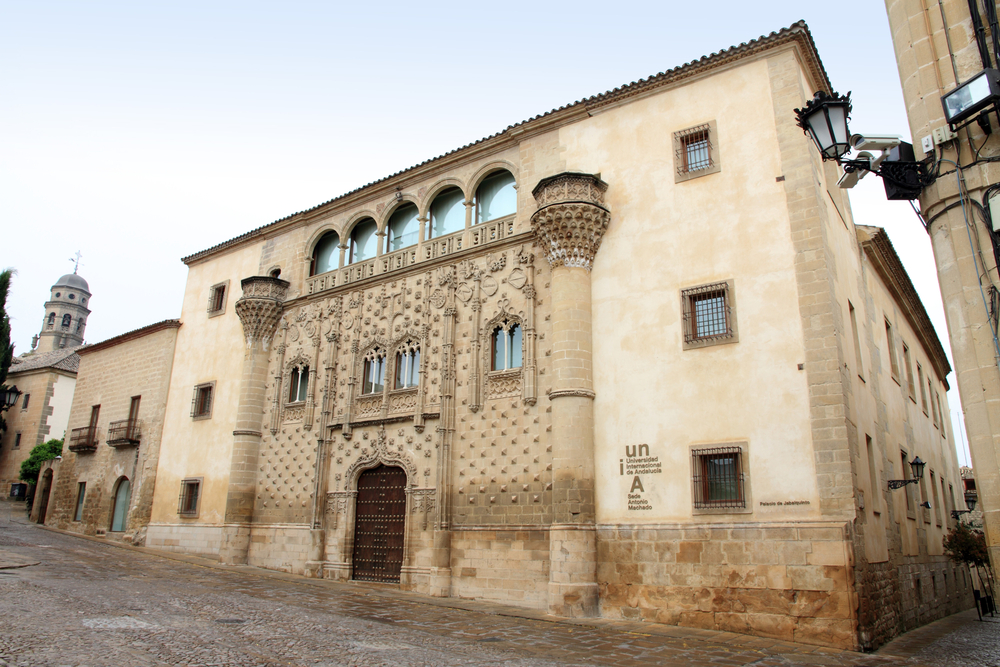
This palace is considered one of the most mesmerising buildings of Baeza, and nowadays serves as see to the Universidad Internacional de Andalucía, together with the Seminary San Felipe Neri. Its facade is a true masterpiece, with pyramidal stone studs and an interior patio with marble columns, which dates back to Renaissance times. Also, focus on the spectacular Baroque-style stairway, whose richness in decoration and plenty of details will leave you mesmerised.
- Monday to Friday: 9 am – 2 pm
- Closed: Saturday, Sunday and on Bank Holidays
Plaza del Pópulo
Plaza del Pópulo is one of the main squares of Baeza, also known as Plaza de Los Leones since it welcomes the Fuente de Los Leones (Fountain of the Lions). The fountain was built thanks to Roman and Iberian carvings, and on its top, you can spot the statue of Imilce, who is said to have been Hannibal’s wife.
It is delimited by the Puerta de Jaén (Jaen Gate), which connects to the 1526 Arco de Villalar, built by Charles V to commemorate the victory over a group of rebels in Valladolid.
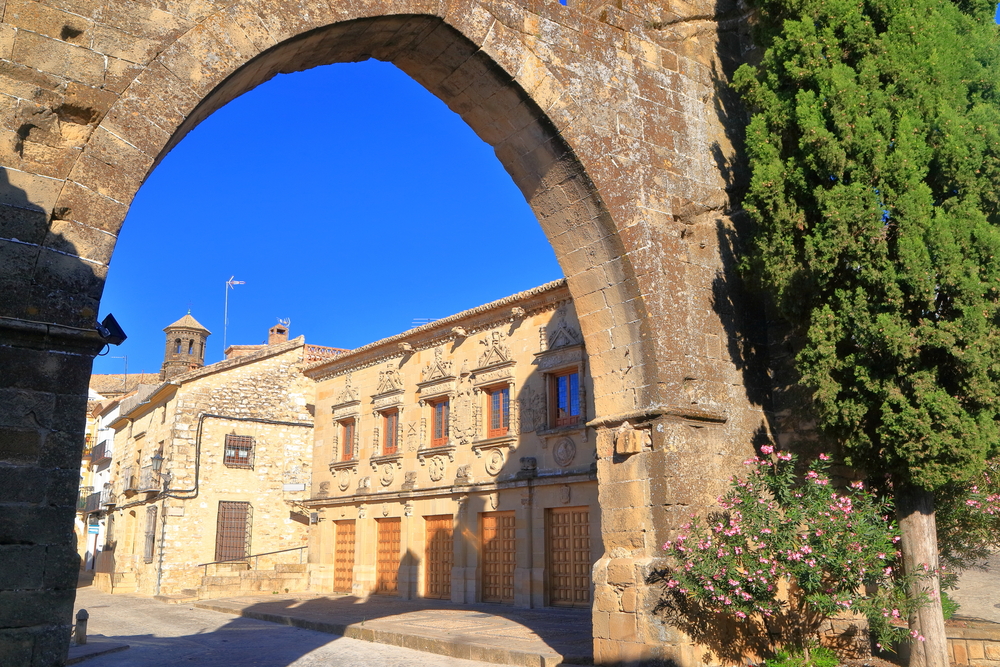
The square welcomes the Casa del Pópulo, which is an old courthouse converted into Baeza’s tourist office, and the old butchery shop, which is now the courthouse of Baeza. Tourists cannot visit this building; however, you can spot its marvellous facades from the exterior.
Antigua Universidad of Baeza
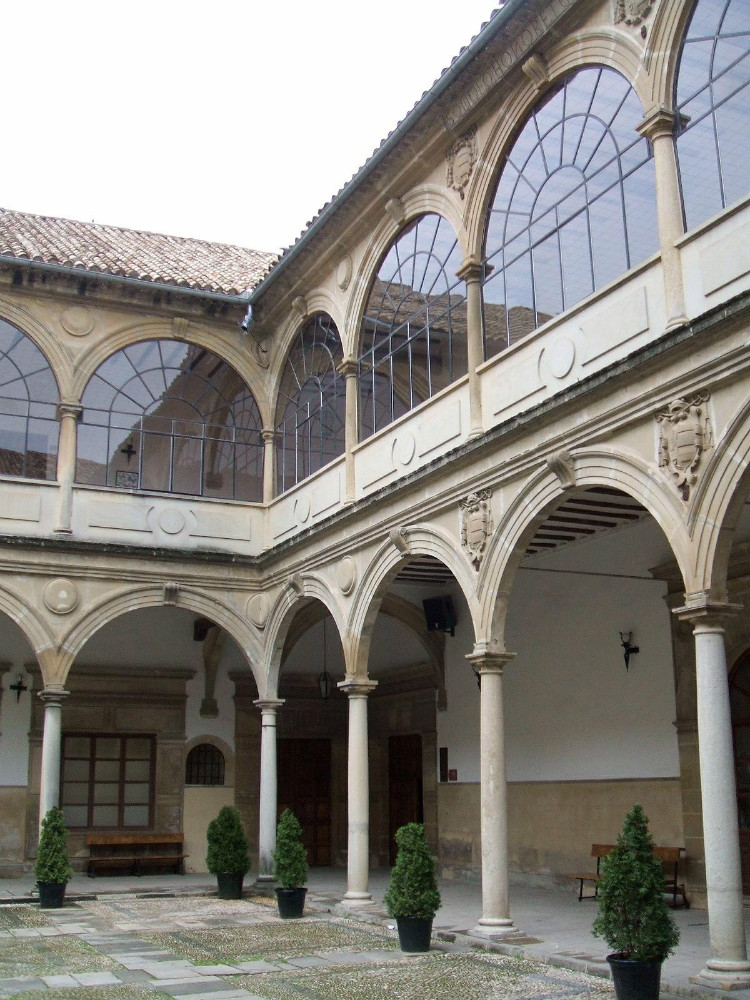
Rodrigo López created the 1538 University of Baeza, and it soon became the cultural centre of the town until 1824, and in 1875 it was converted into a high school. The entry is free, and you can visit the places where Illuminated professors taught their pupils about Greek, Philology, Theology, Rhetoric. You can also see where the Spanish poet Antonio Machado taught French from 1912 to 1919.
Its architecture is typical of the Renaissance buildings, and it welcomes an events room on the patio and the chapel of Saint John the Evangelist. The decoration of the exterior of the Old University follows the Baroque style.
Places to stay in Baeza
Discovering what to see in Baeza may leave you yearning for relaxation in an authentic holiday home. Find out the best holiday homes and villas in the surrounding area of Baeza and start dreaming about your next holidays.



Discover what to see in Baeza and take a trip to enjoy the jewels of the province of Jaen.
Have you ever been to Baeza? Did you like any of its monuments in particular? Tell us in the comments below!

